17 Best Servant Leadership Books: Ultimate List!

Are you looking to transform your leadership style and inspire your team like never before? Discover the powerful concept of servant leadership through our curated list of 17 Best Servant Leadership Books that dive deep into how to lead by serving others.
Unlock the secrets to building more effective, empathetic, and successful organizations by exploring these transformative texts, each offering unique insights and practical strategies to elevate your leadership and create a lasting impact.
Content Overview:
What is Servant Leadership?
Servant leadership is a philosophy and set of practices that enrich the lives of individuals, build better organizations, and ultimately create a more just and caring world. The concept was developed by Robert K. Greenleaf in 1970, and it emphasizes that the primary role of a leader is to serve others.
Here are the key characteristics of servant leadership:
- Empathy: Servant leaders strive to understand and empathize with others. They acknowledge and value the feelings and perspectives of their team members.
- Listening: Effective listening is a cornerstone of servant leadership. Leaders prioritize listening actively to their team’s ideas and concerns before making decisions.
- Healing: Servant leaders recognize the emotional and psychological needs of their team and aim to help them overcome personal and professional challenges.
- Awareness: They are cognizant of their strengths, weaknesses, values, and the impact of their actions on others. This awareness also involves understanding the broader context in which they operate.
- Persuasion: Rather than using their authority to compel compliance, servant leaders rely on persuasion to convince others. This approach fosters greater collaboration and consensus.
- Conceptualization: Servant leaders think beyond day-to-day realities and focus on the long-term goals and strategies that will lead to the growth and success of their organization.
- Foresight: They use their experience and intuition to anticipate future possibilities and potential issues, preparing the team accordingly.
- Stewardship: Servant leaders take responsibility for the resources and people entrusted to them, managing both with care and attention to broader societal impact.
- Commitment to the growth of people: They are committed to the personal, professional, and spiritual growth of each individual in their team.
- Building community: Servant leaders foster a sense of community within their organization, promoting a culture of trust, support, and mutual respect.
Servant leadership contrasts with traditional leadership approaches, where the leader’s main focus is the thriving of their company or organization. Instead, servant leaders prioritize the welfare and development of their team members.
This leadership style can be applied across various types of organizations, from businesses to non-profits and community groups.
17 Best Servant Leadership Books List
Here is a list of 17 highly recommended books on servant leadership that offer insights, strategies, and real-world examples for developing servant leadership skills and implementing its principles in various organizational settings:
1. “Servant Leadership: A Journey into the Nature of Legitimate Power and Greatness” by Robert K. Greenleaf.
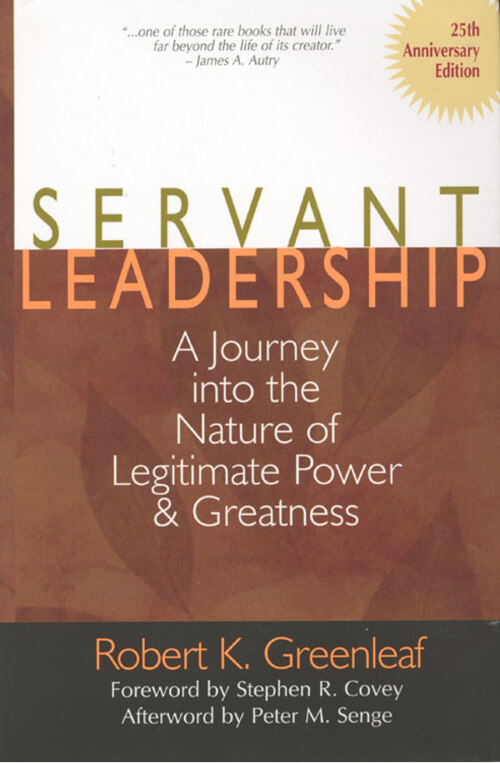
“Servant Leadership: A Journey into the Nature of Legitimate Power and Greatness” by Robert K. Greenleaf is a seminal work that profoundly shifted the understanding and application of leadership.
First published in 1977, the book introduces the revolutionary concept of servant leadership, which prioritizes the welfare and growth of others as the primary goal of leadership. Greenleaf’s thesis is simple yet transformative: the best leaders are those who serve others, not those who command from above.
In his exploration of servant leadership, Greenleaf delves into the qualities and behaviors that define a servant leader. He suggests that such leaders must have a strong desire to serve first, with leadership following as a natural extension of their desire to help others.
The book argues that this approach to leadership does not only enhance the personal development of individuals within the organization but also leads to more effective, humane, and creative organizations.
Throughout the book, Greenleaf uses examples from literature, religion, and history to illustrate his points, emphasizing the ethical and moral dimensions of leadership.
He challenges traditional power dynamics and hierarchies, advocating for a more inclusive, empathetic, and listening-oriented leadership style.
“Servant Leadership” is not just a guide for business leaders but also a call to action for all individuals in positions of influence.
It invites readers to rethink their approach to power, authority, and service, making it a foundational text for those looking to lead with integrity and a genuine commitment to the betterment of others.
2. “The Servant: A Simple Story About the True Essence of Leadership” by James C. Hunter.
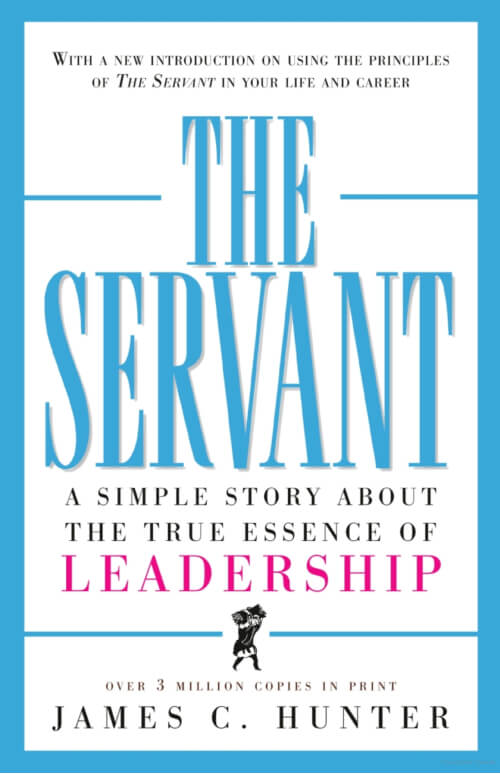
“The Servant: A Simple Story About the True Essence of Leadership” by James C. Hunter is an engaging and insightful narrative that explores the transformational journey of becoming a servant leader.
Published in 1998, this book presents the concept of servant leadership not through abstract theories, but via a compelling story that resonates with anyone at any level of an organization or community.
The story is centered around John Daily, a disillusioned executive struggling with his professional and personal life, who unexpectedly finds himself attending a week-long leadership retreat at a monastery.
The monastery is led by a wise and unassuming former business leader who now embraces a life of service. Over the course of the retreat, John and other participants are introduced to the fundamental principles of servant leadership through a series of lessons and discussions.
Hunter masterfully uses the narrative to break down complex leadership ideals into understandable, relatable concepts.
The book covers key aspects of servant leadership such as listening, empathy, healing, awareness, persuasion, conceptualization, foresight, stewardship, commitment to the growth of people, and building community.
These principles are brought to life through interactions and reflections that challenge the characters, including John, to reevaluate their traditional views on leadership.
“The Servant” serves as both a mirror and a map—a mirror reflecting one’s current leadership style and a map showing the path to deeper, more meaningful approaches to leading by serving.
It is an essential read for anyone looking to inspire and lead others not by authority but through service and the development of their community and team.
3. “Leaders Eat Last: Why Some Teams Pull Together and Others Don’t” by Simon Sinek.
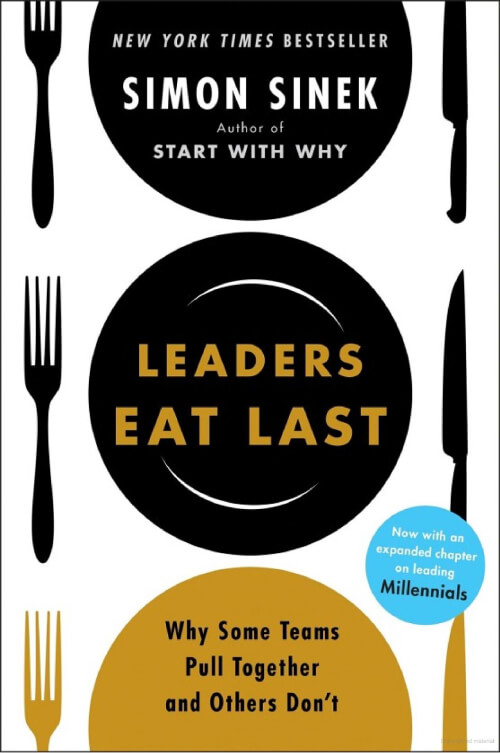
“Leaders Eat Last: Why Some Teams Pull Together and Others Don’t” by Simon Sinek offers a profound examination of the dynamics that contribute to successful and unsuccessful team environments.
Published in 2014, this influential work draws on a range of real-life examples and insights from fields such as anthropology, biology, and business to explain why certain teams excel and others falter.
At the heart of Sinek’s argument is the belief that the most successful workplaces are those where leaders prioritize the well-being of their people.
Inspired by military traditions where higher-ranking officers eat after their troops, the title “Leaders Eat Last” symbolizes the essence of true leadership: putting the needs of others first to foster a sense of safety and belonging.
Sinek explores how leaders can create an environment where team members feel secure, where they are free to innovate, collaborate, and adapt without fear of retribution. He emphasizes the importance of trust and safety, arguing that these elements are crucial for teams to function effectively.
By nurturing a circle of safety, leaders protect their teams from the constant threats of stress and danger that can undermine performance and satisfaction.
“Leaders Eat Last” delves into the biochemical drivers of human behavior such as endorphins, dopamine, serotonin, and oxytocin, explaining how they influence team dynamics and leadership styles.
Sinek uses a mix of scientific research, historical events, and personal anecdotes to illustrate how leaders who embrace empathy and responsibility foster teams that are not only more cohesive and motivated but also more successful in achieving their goals.
This book is a call to action for anyone in a leadership role, challenging them to rethink how they lead and to strive to create an atmosphere where people feel valued, cared for, and safe. It is essential reading for those looking to enhance their leadership skills and build resilient, thriving teams.
4. “Dare to Serve: How to Drive Superior Results by Serving Others” by Cheryl Bachelder.
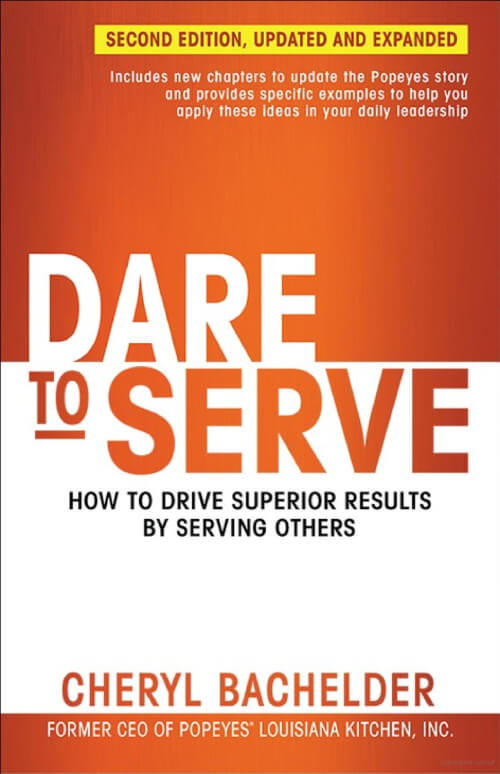
“Dare to Serve: How to Drive Superior Results by Serving Others” by Cheryl Bachelder is a compelling exploration of servant leadership, demonstrated through the transformative success story of Popeyes Louisiana Kitchen.
Published in 2015, this book draws directly from Bachelder’s personal experiences as the CEO of Popeyes, where she applied the principles of servant leadership to revitalize the brand and improve its performance dramatically.
Bachelder begins by outlining the state of crisis that Popeyes was in when she took over—facing declining profits, low staff morale, and stagnant growth. She then details the counterintuitive approach she employed: focusing on serving others rather than prioritizing profits alone.
This book provides an in-depth look at how placing the needs of employees and franchise owners first can lead to superior results for all stakeholders.
The core of “Dare to Serve” is Bachelder’s firm belief in the power of servant leadership, a style that emphasizes increased service to others as the pathway to achieving true leadership success.
She discusses practical strategies for implementing this leadership style, including having a humble attitude, being courageous about making necessary changes, and focusing on the long-term success of the team rather than short-term gains.
Through a mix of personal reflections, real-life business scenarios, and actionable advice, Bachelder shows how servant leadership not only changes the culture of a company but also drives its financial success.
This book is an invaluable resource for current and aspiring leaders who are eager to make a significant impact in their organizations by dedicating themselves to the service of their teams. It is a testament to the idea that great leaders don’t just lead; they serve.
5. “The World’s Most Powerful Leadership Principle: How to Become a Servant Leader” by James C. Hunter.

“The World’s Most Powerful Leadership Principle: How to Become a Servant Leader” by James C. Hunter builds upon his previous work, presenting a deeper exploration of servant leadership within the corporate context.
Published in 2004, this book aims to provide a clear, actionable guide for individuals seeking to embody the principles of servant leadership in their professional lives.
Hunter begins by asserting the premise that servant leadership is not just a moral or ethical approach to leading, but a practical and powerful method to achieve both personal and organizational success.
He challenges conventional leadership models that emphasize authority and power, arguing instead for a leadership style that focuses on the growth and well-being of people and the communities to which they belong.
Throughout the book, Hunter elaborates on the key traits of a servant leader, such as humility, patience, honesty, and respect, illustrating how these qualities are essential for a sustainable and effective leadership approach.
He also tackles common misunderstandings about servant leadership, such as the perception that it is too soft or passive for the competitive business world.
“The World’s Most Powerful Leadership Principle” is rich with examples from Hunter’s consulting experience, where he has applied servant leadership principles to real-world business challenges.
The book provides readers with practical tools and exercises to develop their leadership skills, enhance team performance, and foster a positive workplace culture.
Hunter’s work is a compelling call to action for leaders at all levels to rethink their approach to leadership. It is an essential guide for those committed to leading by example, prioritizing the needs of their team members, and achieving excellence through service.
6. “The Culture Code: The Secrets of Highly Successful Groups” by Daniel Coyle.

“The Culture Code: The Secrets of Highly Successful Groups” by Daniel Coyle offers a captivating look at what makes certain teams excel while others falter.
Published in 2018, this book is not exclusively about servant leadership but aligns closely with its principles by detailing how leaders can nurture exceptionally cooperative and successful environments.
Coyle delves into the dynamics of various high-performing groups across different disciplines—including sports teams, military units, and companies—to uncover the universal elements that lead to success.
Through engaging storytelling and robust scientific research, he identifies three key skills that leaders can foster to create a thriving culture: building safety, sharing vulnerability, and establishing purpose.
By “building safety,” Coyle emphasizes the importance of making team members feel secure and valued, which encourages openness and mutual trust. “Sharing vulnerability” involves leaders showing their own fallibility and encouraging others to do the same, which enhances group cohesion and cooperation.
Finally, “establishing purpose” revolves around developing a clear sense of mission that is compelling and inclusive, guiding the group’s efforts and fostering a shared identity.
Throughout “The Culture Code,” Coyle combines insightful psychological findings with practical tips and real-world examples from organizations like Pixar and the San Antonio Spurs. Each chapter concludes with strategies that leaders and managers can implement to apply these ideas within their own teams.
This book is an essential resource for anyone looking to understand the complex mechanics of group success and is particularly valuable for leaders striving to create a positive, collaborative, and effective workplace culture.
7. “The Leader Who Had No Title: A Modern Fable on Real Success in Business and in Life” by Robin Sharma.
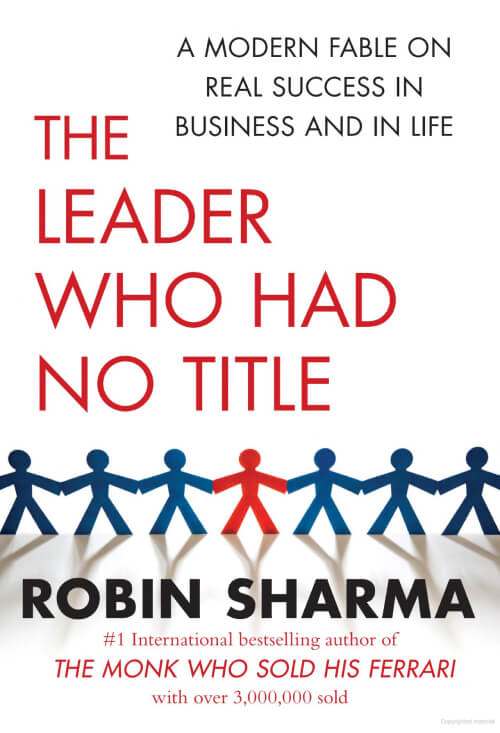
“The Leader Who Had No Title: A Modern Fable on Real Success in Business and in Life” by Robin Sharma is a motivational book that challenges conventional notions of leadership and success.
Published in 2010, this work encourages readers to embrace leadership roles and make a significant impact, regardless of their official position within an organization.
Sharma crafts a compelling narrative through a modern fable about Blake, a veteran who feels disillusioned by his mundane job and his life’s seeming lack of direction.
The story unfolds as Blake encounters a series of mentors who introduce him to the revolutionary concept that every individual has the potential to be a leader.
This idea forms the core of Sharma’s philosophy: that leadership is not a title or a formal position, but a mindset and a set of actions that can be embraced at every level of an organization.
Through engaging storytelling, Sharma outlines the practical strategies and personal disciplines that anyone can adopt to achieve greatness. He emphasizes that true leadership is about cultivating personal responsibility, striving for excellence, and having the courage to make difficult choices.
Sharma’s insights are designed to be applicable not only in professional settings but also in personal life, advocating for a holistic approach to leadership and success.
“The Leader Who Had No Title” is both inspirational and practical, filled with actionable advice that encourages readers to transcend their self-imposed limitations. It is a clarion call to transform how we view ourselves and our potential to influence change and drive success in every aspect of our lives.
This book is ideal for those looking to lead more effectively, regardless of their current role, and to make a profound impact on their world.
8. “Turn the Ship Around!: A True Story of Turning Followers into Leaders” by L. David Marquet.
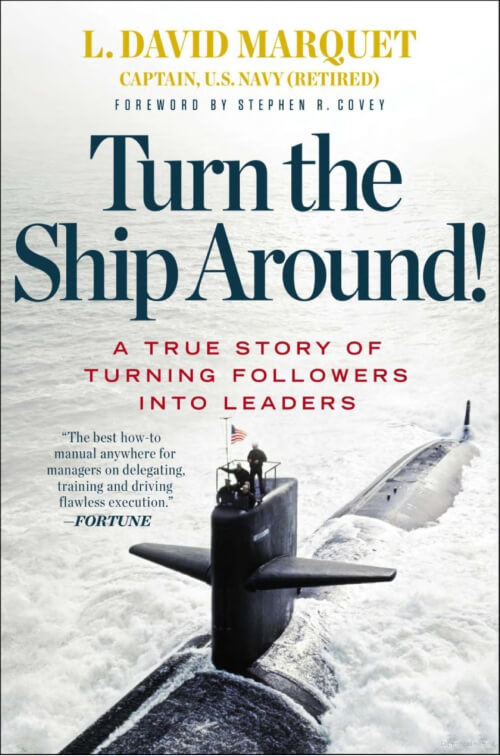
“Turn the Ship Around!: A True Story of Turning Followers into Leaders” by L. David Marquet delivers a riveting account of revolutionary leadership aboard the USS Santa Fe, a nuclear submarine.
Published in 2013, this book provides a powerful case study of how the principles of servant leadership can transform even the most rigid and traditional organizations, such as the military.
Captain Marquet’s story begins with his unexpected assignment to the USS Santa Fe, at the time considered one of the least effective submarines in the fleet.
Faced with low morale, high turnover, and poor performance, Marquet quickly realized that the conventional command-and-control leadership approach was failing. In response, he introduced a radically different model: empowering every member of the crew to be a leader and make decisions.
Marquet details his journey of relinquishing command authority in favor of a leadership model where members are given control over their actions and decisions, based on expertise rather than rank.
This approach required a significant cultural shift, redefining roles, and instilling a sense of ownership and accountability in every crew member.
“Turn the Ship Around!” is structured around practical leadership lessons Marquet learned and implemented, making it a valuable resource for leaders in any organization who wish to foster a culture of empowerment, initiative, and innovation.
Through compelling narrative and insightful analysis, Marquet demonstrates that with trust and respect, even the most hierarchical organizations can flourish with distributed leadership, proving that leaders are made, not born.
This book is a must-read for those looking to inspire real change in their organizations by cultivating leaders at all levels.
9. “Leadership Is an Art” by Max DePree.
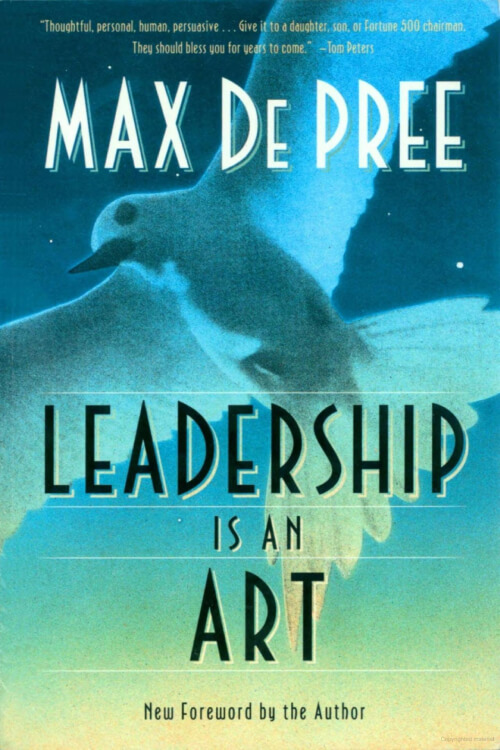
“Leadership Is an Art” by Max DePree is an eloquent exploration of the nuanced and humanistic approach to leadership, first published in 1989.
DePree, who served as CEO of the highly regarded furniture company Herman Miller, presents a philosophy that stresses the artistic and moral dimensions of leadership, focusing heavily on relationships and the deep responsibilities leaders hold toward their team members.
In this reflective and insightful book, DePree argues that the most effective leaders are those who understand and value the potential of their employees.
He emphasizes that leadership transcends mere management techniques; it is fundamentally about liberating people to do what they are best at and enabling them to exceed their own expectations.
“Leadership Is an Art” is structured around core principles such as integrity, humility, and the importance of building a community within the workplace.
DePree discusses the significance of being an attentive listener, the need for open communication, and the courage to uphold one’s values even when faced with difficult decisions. He insists that leadership is a form of stewardship characterized by care, commitment, and the creation of value for the community.
With personal anecdotes and the lessons he learned during his tenure at Herman Miller, DePree provides readers with a timeless guide to leadership that prioritizes human worth and potential.
His book is a compelling read for current and aspiring leaders across all sectors who seek to foster environments where creativity, innovation, and personal growth are encouraged and celebrated.
10.”Good to Great: Why Some Companies Make the Leap and Others Don’t” by Jim Collins.
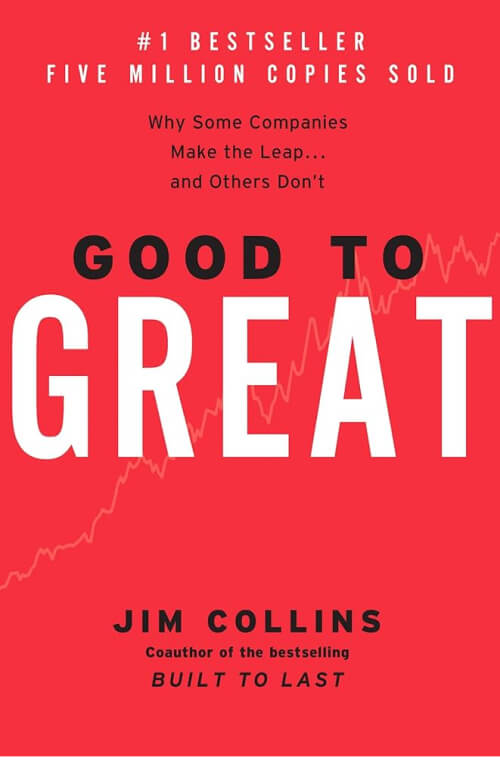
“Good to Great: Why Some Companies Make the Leap and Others Don’t” by Jim Collins is a landmark business book that systematically explores what it takes for companies to transcend mediocrity and achieve sustained excellence.
Published in 2001, this book is the result of a rigorous five-year study where Collins and his research team identified companies that made a leap from good to great results and sustained those results for at least fifteen years.
Collins introduces the concept of “Level 5 Leadership,” a combination of personal humility and professional will, as a critical factor in transforming companies.
Leaders who exhibit these traits, according to Collins, do not seek success for their own glory; rather, they are quietly driven by a commitment to produce sustainable results for their organizations.
The book outlines several key concepts that differentiate great companies from their less successful counterparts.
These include the “Hedgehog Concept,” which involves focusing on what a company can be best at, the disciplined approach to technology adoption, and the “Flywheel and the Doom Loop,” which explains the momentum of success versus the spirals of failure.
Through detailed case studies and analyses, Collins presents a framework not only for understanding what makes great companies tick but also for applying these lessons in different organizational contexts.
“Good to Great” offers invaluable insights into leadership, strategy, and organizational change, making it essential reading for business leaders, managers, and anyone interested in the dynamics of corporate transformation.
11. “Strengthening the Soul of Your Leadership: Seeking God in the Crucible of Ministry” by Ruth Haley Barton.

“Strengthening the Soul of Your Leadership: Seeking God in the Crucible of Ministry” by Ruth Haley Barton offers a deep and contemplative look at the spiritual dimensions of leadership, particularly within the context of ministry.
Published in 2008, this book addresses the often overlooked inner life of leaders, emphasizing the importance of nurturing one’s spiritual health in order to effectively serve and lead others.
Barton, drawing on her own experiences as a spiritual leader and founder of the Transforming Center, argues that the challenges and pressures of leadership can be transformative opportunities to deepen one’s relationship with God.
She posits that true leadership comes from the overflow of vibrant inner life, and without spiritual renewal, leaders risk burnout, ineffectiveness, and moral failure.
The book explores practical ways to integrate spiritual practices into the life of a leader, including solitude, silence, and regular spiritual retreats. Barton uses the life of Moses as a framework to discuss the trials and triumphs of leading while maintaining a steadfast focus on God.
Through Moses’ story, readers learn about the dangers of leading under constant pressure, the necessity of relying on God, and the importance of community and spiritual companionship.
“Strengthening the Soul of Your Leadership” invites leaders of all kinds to step back from their daily demands and cultivate a deeper spiritual life. It’s particularly suited for those in ministry who find themselves caught between the demands of their roles and their personal spiritual journey.
This book serves as both a guide and a companion for those seeking to align their leadership with their faith, ensuring that they are leading from a place of spiritual strength and integrity.
12. “Lead Like Jesus: Lessons from the Greatest Leadership Role Model of All Time” by Ken Blanchard and Phil Hodges.
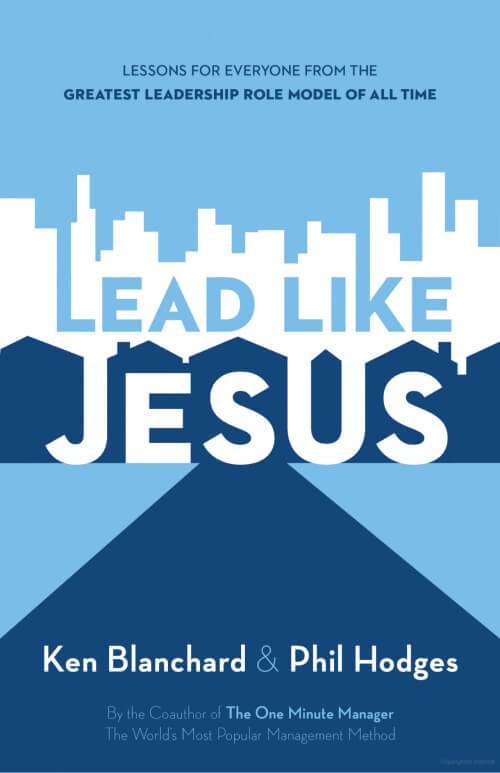
“Lead Like Jesus: Lessons from the Greatest Leadership Role Model of All Time” by Ken Blanchard and Phil Hodges is a transformative guide that uses the life and teachings of Jesus Christ to model the ultimate example of servant leadership.
Published in 2005, this book presents a unique and spiritually enriching approach to leadership that contrasts sharply with conventional corporate leadership models.
Blanchard and Hodges argue that the heart of great leadership lies not in power or authority but in service, humility, and love—qualities epitomized by Jesus.
They propose a comprehensive framework for leadership that encompasses the heart, head, hands, and habits, encouraging leaders to align their beliefs and behaviors with those of Christ.
The book breaks down the practical applications of living and leading like Jesus into accessible, actionable steps.
It discusses the importance of self-reflection in understanding one’s motivations for leadership, the need for clear values and vision in guiding one’s decisions, and the critical role of relationships in building effective teams.
Additionally, “Lead Like Jesus” emphasizes continual growth and learning as essential components of leadership excellence.
Designed for anyone interested in elevating their leadership approach, “Lead Like Jesus” offers a step-by-step guide that is both spiritually and practically focused.
Whether leading a church, a community, or a corporation, readers will find invaluable insights on how to cultivate a leadership style that is grounded in service and transformational for both leaders and those they lead.
This book is especially appealing to those seeking to integrate their faith with their leadership practice, providing them with the tools to lead effectively and compassionately.
13. “Leading at a Higher Level: Blanchard on Leadership and Creating High Performing Organizations” by Ken Blanchard.
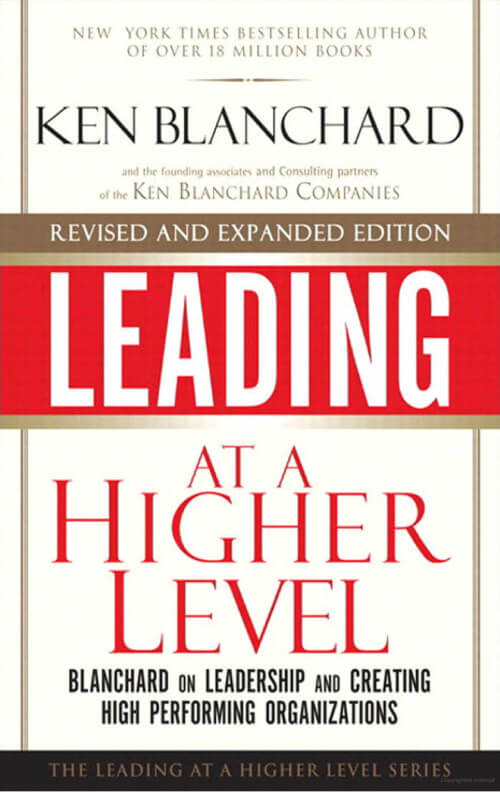
“Leading at a Higher Level: Blanchard on Leadership and Creating High Performing Organizations” by Ken Blanchard is a comprehensive exploration of Blanchard’s widely respected and influential views on leadership.
First published in 2006, this book distills decades of research and professional experience into an essential guide for anyone looking to elevate their leadership skills and foster high-performing organizations.
Blanchard’s approach is centered on the belief that leadership is not just about meeting benchmarks and achieving goals but about developing the potential of people.
He introduces a holistic model that combines effective leadership practices with a deep commitment to personal growth and organizational excellence.
The book outlines Blanchard’s key concepts such as servant leadership, situational leadership, and leading self-managed teams, providing a robust framework for developing leadership that is both compassionate and results-oriented.
“Leading at a Higher Level” covers a range of important topics, from creating a compelling vision and cultivating a customer-oriented mindset to managing change effectively and empowering individuals.
Blanchard emphasizes the importance of aligning organizational goals with personal values and the need for continuous learning and improvement.
Ideal for leaders at all levels, this book not only discusses what it means to lead effectively but also provides practical tools and techniques for putting these ideas into action.
Through engaging case studies and real-world examples, Blanchard shows how leaders can create environments that foster innovation, respect, and peak performance.
“Leading at a Higher Level” is a definitive guide for those who aspire to transform their leadership approach and achieve enduring success in their organizations and communities.
14. “Servant Leadership in Action: How You Can Achieve Great Relationships and Results” edited by Ken Blanchard and Renee Broadwell.
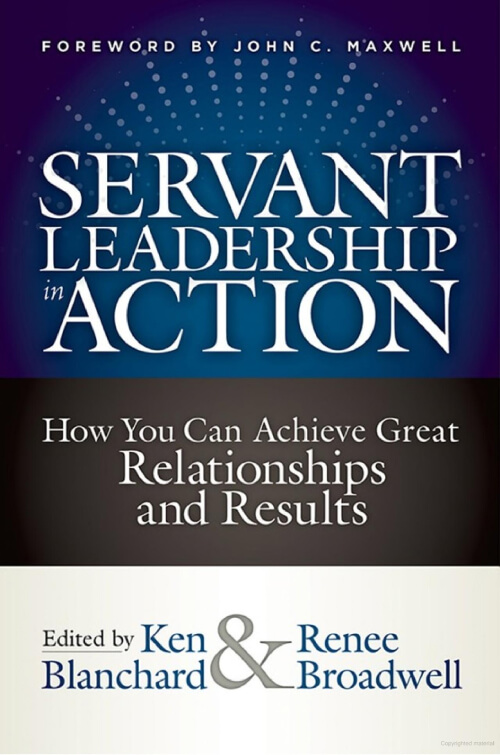
“Servant Leadership in Action: How You Can Achieve Great Relationships and Results,” edited by Ken Blanchard and Renee Broadwell, is an inspiring compilation of essays on the theme of servant leadership.
Published in 2018, this collection brings together insights from some of the most respected minds in leadership and management, including authors, consultants, and practitioners who have championed the philosophy of serving first and leading second.
Each contributor in this anthology explores different facets of servant leadership, sharing personal stories, experiences, and reflections that illustrate how this approach can transform organizations and lives.
From tales of corporate turnarounds to strategies for nurturing cultures of inclusivity and respect, the essays collectively highlight the effectiveness and versatility of servant leadership across various sectors and settings.
Blanchard and Broadwell have curated a rich diversity of voices that lend depth and breadth to the discussion of servant leadership. The essays address key components of this leadership style, such as empathy, listening, stewardship, and the commitment to the growth and well-being of people.
Readers will find practical advice on implementing servant leadership principles in their daily practices and organizational strategies.
“Servant Leadership in Action” serves as both a testament to the power of leading by example and a practical guide for anyone seeking to inspire and lead more effectively.
This book is ideal for current and aspiring leaders looking to foster environments where people feel valued and motivated to achieve great results. It stands out as a valuable resource for understanding and practicing leadership that enriches lives and organizations alike.
15. “The Servant Leader: How to Build a Creative Team, Develop Great Morale, and Improve Bottom-Line Performance” by James A. Autry.
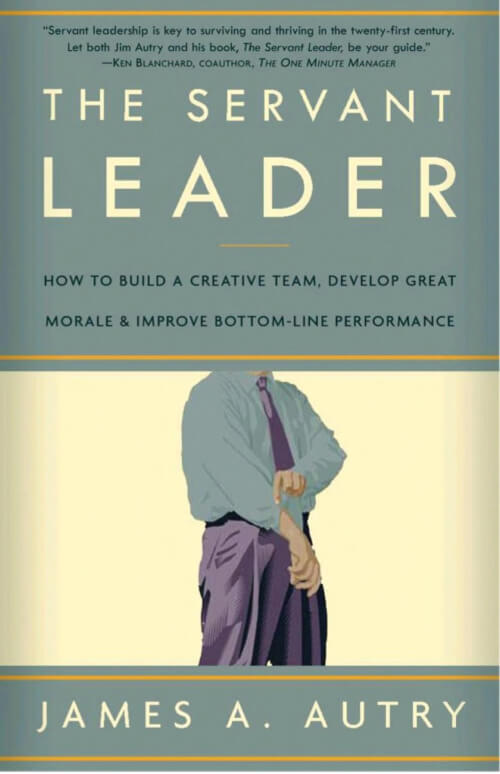
“The Servant Leader: How to Build a Creative Team, Develop Great Morale, and Improve Bottom-Line Performance” by James A. Autry is an insightful exploration of how servant leadership principles can be applied effectively in the workplace.
Published in 2001, the book offers practical advice for leaders who aim to foster a culture of creativity, high morale, and enhanced productivity in their teams.
Autry, a seasoned business executive and consultant, draws on his extensive experience to illustrate how adopting a servant leadership approach can transform organizational dynamics.
He argues that leaders who prioritize the needs and growth of their teams can achieve remarkable results, not just in terms of employee satisfaction but also in overall organizational performance.
The book is structured around key principles of servant leadership, including listening, empathy, healing, awareness, persuasion, conceptualization, foresight, stewardship, commitment to the growth of people, and building community.
Autry provides real-world examples and actionable strategies for each of these aspects, showing how they can be integrated into daily leadership practices.
“The Servant Leader” is both a guide and a challenge to leaders at all levels to rethink their roles and responsibilities. It demonstrates that true leadership is not about wielding power but about empowering others.
This book is ideal for managers and executives seeking to develop a leadership style that is both ethical and effective, one that leads to a more motivated workforce and a more successful organization.
16. “The Heart of Leadership: Becoming a Leader People Want to Follow” by Mark Miller.
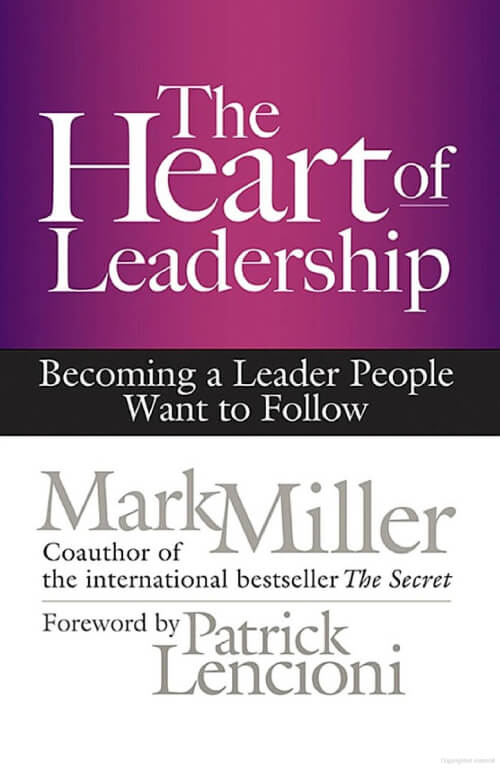
“The Heart of Leadership: Becoming a Leader People Want to Follow” by Mark Miller offers a refreshing perspective on the fundamental qualities that define exceptional leaders.
Published in 2013, this book emphasizes that the essence of true leadership lies not in professional skills or knowledge, but in character. Miller argues that leaders are distinguished by who they are at their core, more so than what they do.
Through a compelling narrative, Miller introduces readers to Blake, a young man aspiring to a leadership position within his company. Blake’s journey of self-discovery begins when he is overlooked for a promotion, prompting him to seek the wisdom of a mentor.
This mentor reveals that the key to effective leadership doesn’t reside in conventional management tactics but rather in the leader’s heart. The lessons unfold as Blake learns about the five essential characteristics that all great leaders share: humility, selflessness, kindness, respectfulness, and honesty.
Miller expertly weaves these themes into a storyline that is both engaging and enlightening, providing readers with a clear roadmap for personal growth. Each chapter delves into one of the character traits, explaining why it is critical and how it can be developed.
“The Heart of Leadership” makes a convincing case that these traits are not just innate qualities but skills that can be nurtured and mastered over time.
This book is ideal for anyone in a leadership role, or aspiring to one, who wants to inspire and motivate others more effectively. It’s especially valuable for those looking to lead with integrity and build trust within their teams.
“The Heart of Leadership” stands out as a guide for those who want to make a significant impact not only through their actions but also through the strength of their character.
17. “Leadership by the Book: Tools to Transform Your Workplace” by Ken Blanchard, Bill Hybels, and Phil Hodges.
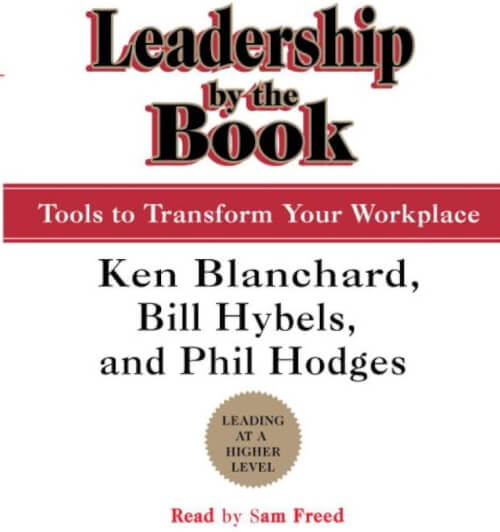
“Leadership by the Book: Tools to Transform Your Workplace” by Ken Blanchard, Bill Hybels, and Phil Hodges is a distinctive guide that intertwines biblical wisdom with contemporary business practices to provide a unique and effective approach to leadership.
Published in 1999, this book presents a thoughtful exploration of how ancient scriptural insights can be applied to modern organizational challenges, offering leaders a profound basis for inspiring and managing their teams.
Blanchard, Hybels, and Hodges draw from their rich experiences in leadership and ministry to discuss principles that are both timeless and universally applicable, regardless of the organizational setting.
The authors argue that leadership is fundamentally about serving others and that the best leaders are those who empower and uplift their teams through ethical behavior and compassionate engagement.
The book uses parables and real-life examples to illustrate key concepts such as vision, values, and motivation, showing how these elements can be aligned with biblical teachings to enhance leadership effectiveness.
Each chapter provides practical tools and techniques that help leaders apply these principles directly in their workplaces, aiming to create environments that are not only productive but also nurturing and ethical.
“Leadership by the Book” is ideal for business leaders, managers, and anyone interested in integrating spiritual values into their leadership practice. It challenges readers to rethink traditional leadership models and embrace a leadership style that fosters trust, respect, and integrity.
This book is particularly valuable for those who wish to lead by example and inspire their teams to achieve greatness through shared values and mutual respect.
Conclusion
These books collectively cover the essence, applications, and transformative potential of servant leadership across a range of contexts and challenges.
Servant leadership not only challenges conventional leadership paradigms but also provides a path for creating more compassionate and effective organizational environments.
The 17 servant leadership books listed offer diverse perspectives and real-world applications of this leadership philosophy, underscoring its relevance across various sectors.
By embodying the principles of servant leadership, individuals at all levels can contribute to a culture that prioritizes growth, community, and the common good, ultimately leading to sustained organizational success and a more equitable society.




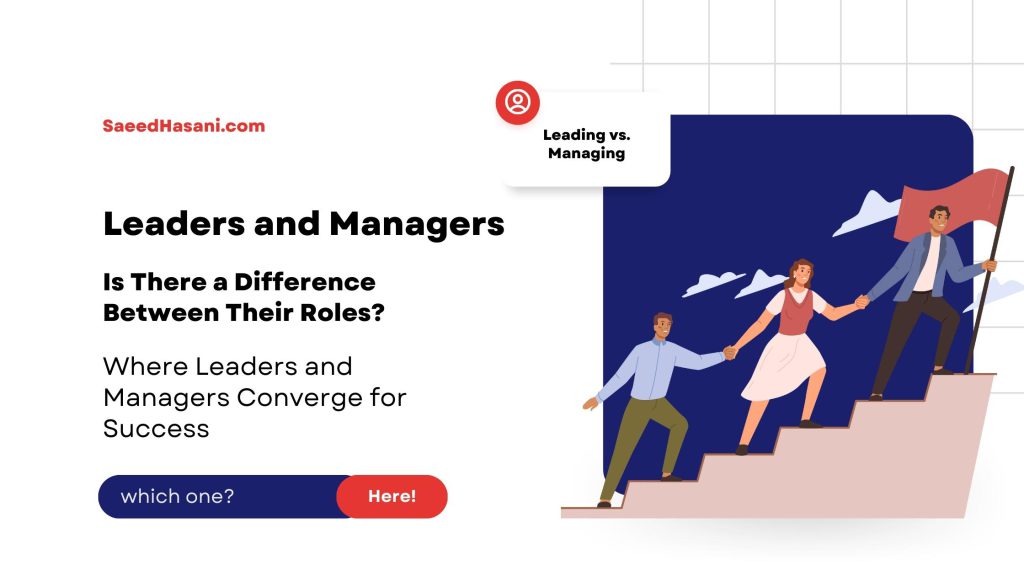


Responses